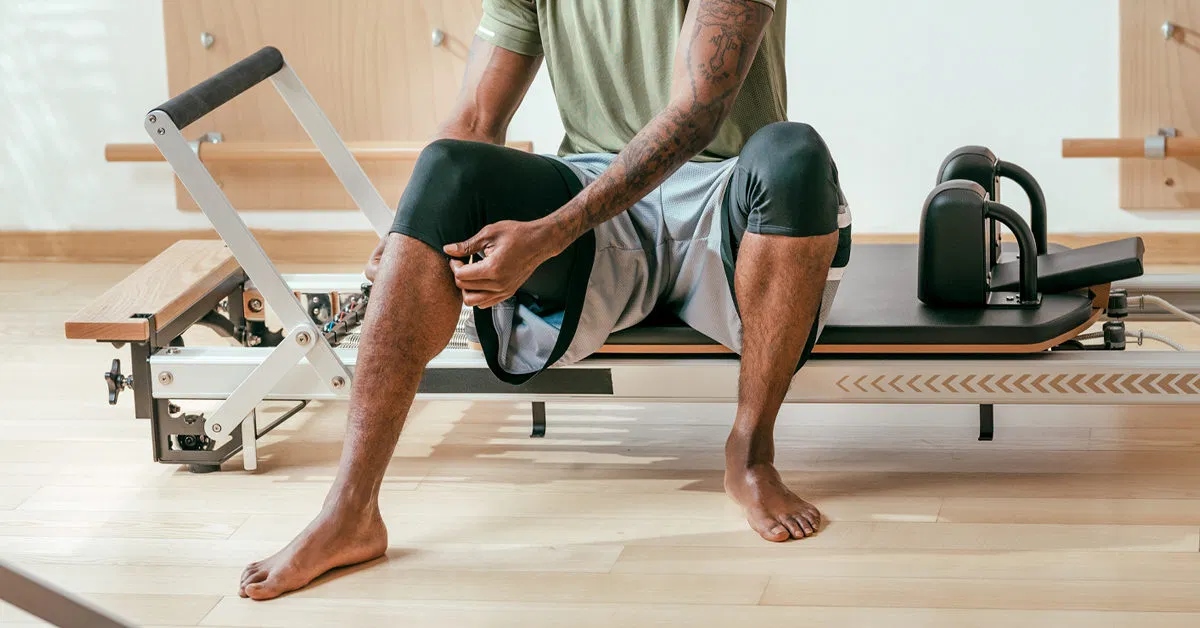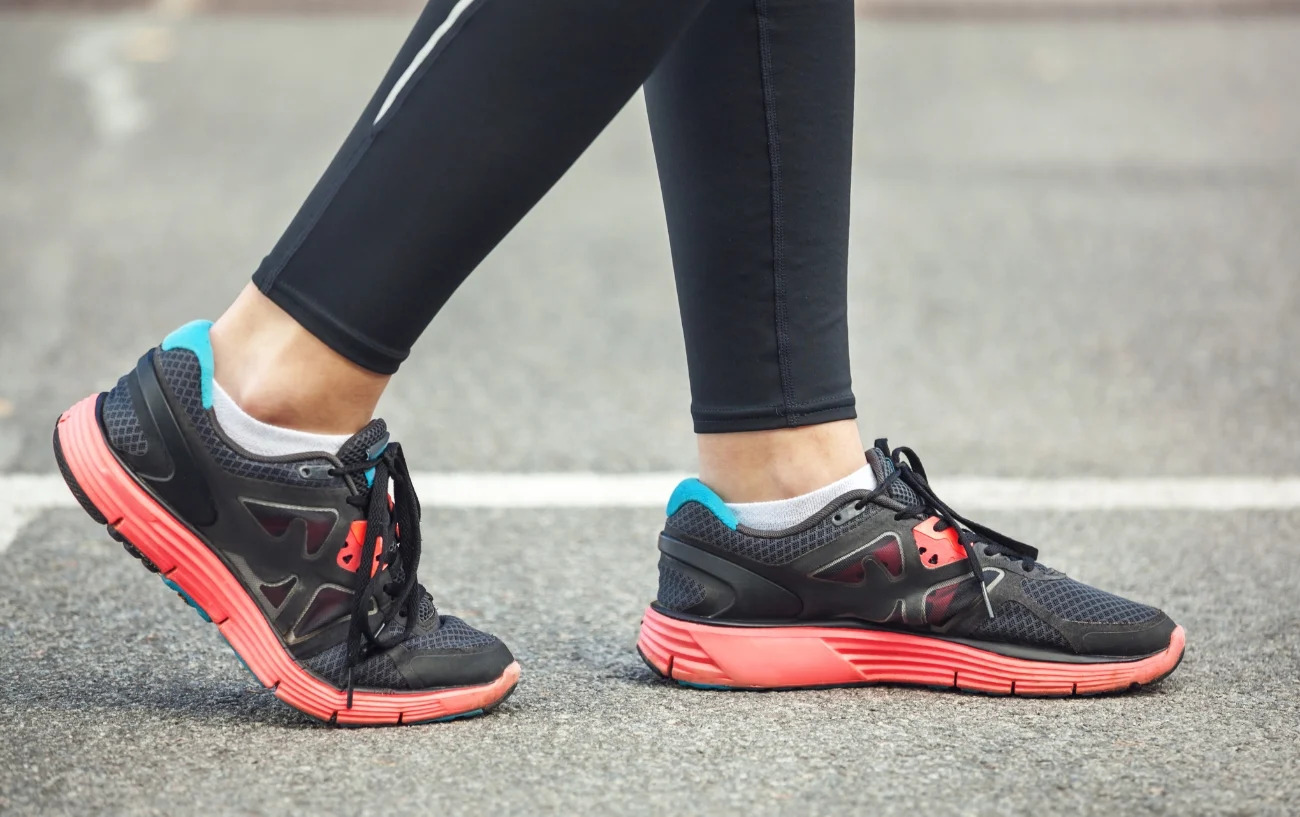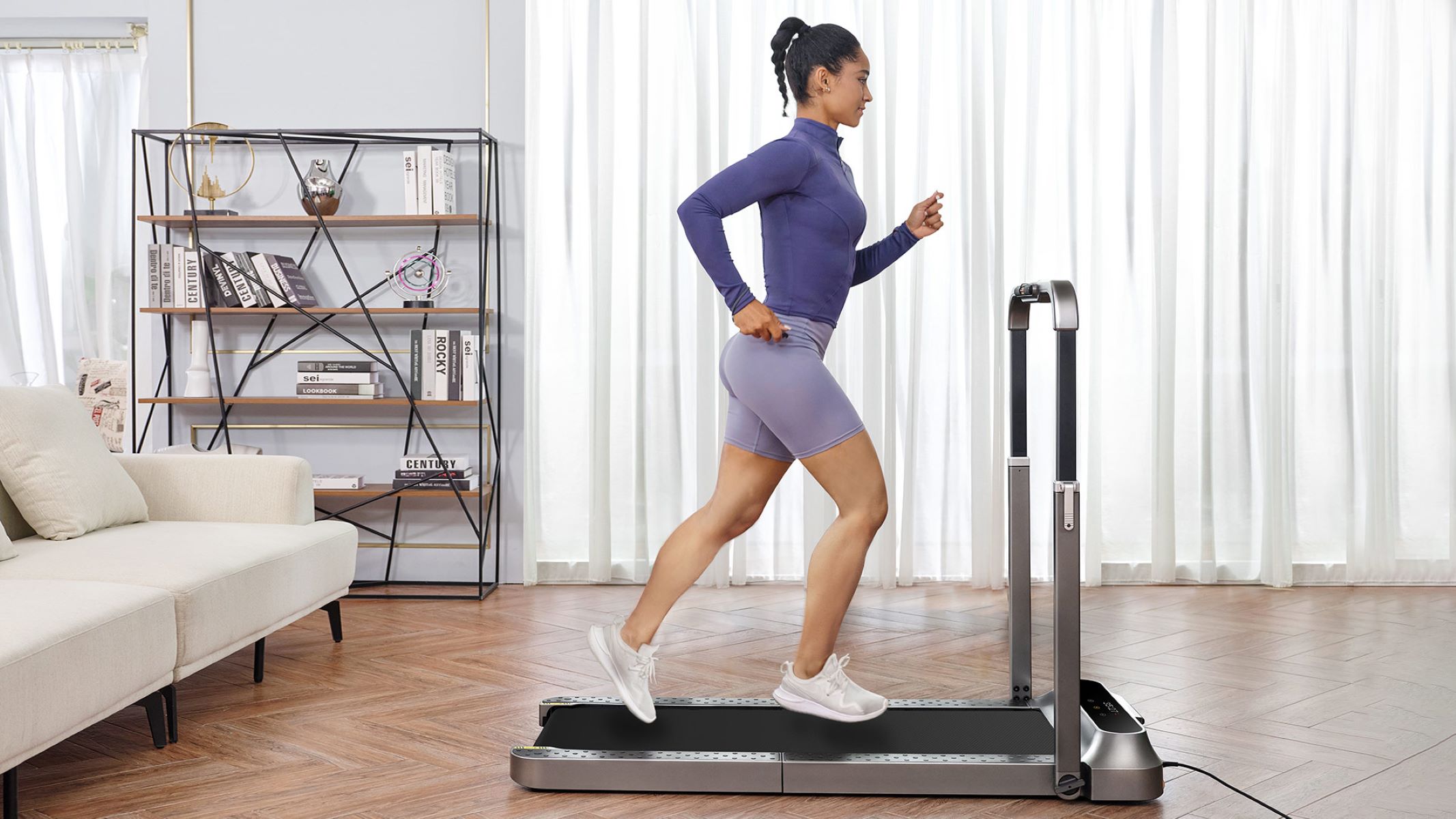Home>Misc>Featured>What Is The Best Exercise After Knee Replacement


Featured
What Is The Best Exercise After Knee Replacement
Published: October 4, 2023
Looking for the best exercise after knee replacement surgery? Discover the featured workout routines that will help you regain strength and mobility.
Introduction
Exercising after a knee replacement surgery is an essential part of the rehabilitation process. It not only helps in regaining strength and mobility but also promotes overall health and well-being. However, it is important to approach post-knee replacement exercise with caution and consult with a healthcare professional before starting any new exercise regimen.
The success of knee replacement surgery depends not only on the surgical procedure itself but also on the patient’s commitment to rehabilitation and exercise. Proper exercise can help reduce pain, increase range of motion, and improve muscle strength around the knee joint. It can also aid in preventing complications such as blood clots and joint stiffness.
In this article, we will discuss the factors to consider before exercising after knee replacement, the benefits of exercise, and the best exercises to incorporate into your post-surgery routine. We will also provide some precautions and tips to ensure a safe and effective exercise program.
It is important to note that every individual’s recovery process may vary, and the guidance of a healthcare professional should be sought before implementing any exercise program. The timing and intensity of exercises will depend on factors such as the type of surgery, overall health condition, and individual capabilities.
Remember that the road to recovery after knee replacement surgery is a gradual process. Start with gentle exercises and gradually progress as your strength and mobility improve. By incorporating the right exercises into your routine and following the recommended precautions, you can maximize your recovery and regain your active lifestyle. Let’s dive in and explore the world of post-knee replacement exercises!
Factors to Consider Before Exercising After Knee Replacement
Before starting any exercise program after knee replacement surgery, it is crucial to consider certain factors to ensure a safe and effective rehabilitation process. These factors will help determine the appropriate exercises and intensity level for your individual situation. Here are some key factors to consider:
1. Healing Time: The healing process differs for each individual, and it is important to allow sufficient time for your surgical incision to heal before engaging in any physical activity. Your surgeon will provide guidelines on when it is safe to begin exercising.
2. Type of Surgery: The type of knee replacement surgery you underwent will play a role in determining the exercises you can perform. For example, if you had a total knee replacement, your rehabilitation program might differ from someone who had a partial knee replacement. It is essential to follow the specific instructions provided by your surgeon or physical therapist.
3. Pain and Swelling: Pain and swelling are common after knee replacement surgery. It is important to assess your pain level and consult with your healthcare professional before starting or modifying any exercise program. Certain exercises may need to be avoided or modified if they cause excessive pain or swelling.
4. Range of Motion: The range of motion of your new knee joint is critical in determining the appropriate exercises. Your physical therapist will guide you through exercises that aim to increase your range of motion gradually. It is important to follow their instructions and not force any movements that may strain the joint.
5. Muscle Strength: Knee replacement surgery often involves cutting through muscles during the procedure. Building strength in these muscles is crucial for a successful recovery. Your physical therapist will guide you through exercises that target the specific muscles surrounding your knee joint.
6. Overall Health: Your overall health and fitness level will also influence the type and intensity of exercises you can perform after knee replacement surgery. It is important to discuss any pre-existing medical conditions or limitations with your healthcare professional to ensure a safe and tailored exercise program.
By considering these factors, you can customize an exercise program that suits your individual needs and promotes a successful recovery after knee replacement surgery. Remember to communicate with your healthcare professionals throughout the process to address any concerns and ensure optimal outcomes.
Benefits of Exercise After Knee Replacement
Exercise plays a crucial role in the rehabilitation process following knee replacement surgery. It offers a wide range of benefits that help improve strength, mobility, and overall well-being. Here are the key benefits of exercise after knee replacement:
1. Pain Management: Regular exercise after knee replacement surgery can help alleviate pain. Exercise stimulates the release of endorphins, which are natural painkillers produced by the body. Strengthening the muscles around the knee joint can also help provide stability and reduce stress on the joint, further reducing pain.
2. Improved Range of Motion: Knee replacement surgery often restores the range of motion of the knee joint, but exercise can help to further enhance it. Incorporating specific range of motion exercises, guided by a physical therapist, can gradually increase your knee’s flexibility and allow you to perform daily activities with greater ease.
3. Increased Muscle Strength: During knee replacement surgery, the muscles around the knee joint may be weakened or damaged. Regular exercise can help rebuild and strengthen these muscles. Building strength in the quadriceps, hamstrings, and calf muscles will enhance stability and support the new knee joint.
4. Enhanced Mobility: One of the primary goals of knee replacement surgery is to improve mobility and regain the ability to walk and perform daily tasks. Engaging in targeted exercises after surgery can help rebuild strength, improve balance, and increase overall mobility. This, in turn, allows you to resume your normal activities and enjoy a more active lifestyle.
5. Weight Management: Maintaining a healthy weight is essential for the long-term success of knee replacement surgery. Exercise, along with a balanced diet, helps in managing weight. Regular physical activity can burn calories, increase metabolism, and promote weight loss or weight maintenance. This reduces the stress and strain on the new knee joint, improving its function and longevity.
6. Cardiovascular Health: Engaging in cardiovascular exercises after knee replacement surgery improves heart health and overall cardiovascular fitness. Low-impact activities such as cycling, swimming, or using an elliptical machine can help to improve endurance and promote a healthy cardiovascular system.
7. Mental Well-being: Exercise has numerous mental health benefits, including reducing stress, anxiety, and depression. The endorphins released during exercise contribute to an improved mood, increased energy levels, and a sense of overall well-being. Engaging in regular exercise after knee replacement surgery can help improve your mental health and outlook on life.
Incorporating exercise into your post-knee replacement routine offers a myriad of benefits that contribute to a successful recovery and an enhanced quality of life. Consult with your healthcare professional or physical therapist to create a personalized exercise plan that aligns with your specific needs and goals. With consistency and guidance, you can experience the many benefits that exercise brings after knee replacement surgery.
Best Exercises After Knee Replacement
After knee replacement surgery, it is important to engage in a variety of exercises that target different aspects of your recovery. A well-rounded exercise routine should include range of motion exercises, strengthening exercises, low-impact cardiovascular exercises, and balance and stability exercises. Let’s explore the best exercises for each category:
1. Range of Motion Exercises: These exercises focus on improving the flexibility and mobility of your new knee joint. Examples include heel slides, ankle pumps, and seated knee extensions. Your physical therapist will guide you through a range of motion exercises specific to your needs.
2. Strengthening Exercises: Strengthening exercises help rebuild the muscles around the knee joint. Some effective exercises include leg presses, squats, and step-ups. Start with low resistance or bodyweight and gradually increase as your strength improves. Work closely with your physical therapist to ensure proper form and progression.
3. Low-impact Cardiovascular Exercises: Cardiovascular exercises improve your heart health and overall endurance without putting excessive stress on your new knee joint. Walking, stationary biking, swimming, and using an elliptical machine are excellent options. Start with shorter durations and low resistance and gradually increase the intensity as tolerated.
4. Balance and Stability Exercises: These exercises focus on improving your balance and stability, which are crucial for everyday activities. Examples include standing on one leg, heel-to-toe walk, and mini squats while holding onto a stable surface. Balance boards and stability balls can also be incorporated under the guidance of a physical therapist.
It is essential to perform these exercises with proper form and technique to avoid any strain or injury. Working with a qualified physical therapist or exercise specialist can help ensure that you are performing the exercises correctly and safely. They can also provide guidance on the appropriate frequency and intensity of each exercise.
Remember to listen to your body and make adjustments as needed. Start with low-impact exercises and gradually progress to higher impact activities as your strength and stamina improve. Be patient with your progress, as recovery takes time.
Incorporating a combination of range of motion exercises, strengthening exercises, low-impact cardiovascular exercises, and balance and stability exercises into your routine will help facilitate a successful recovery and improve your overall function after knee replacement surgery. Consult with your healthcare professional or physical therapist to design a personalized exercise plan that addresses your specific needs and goals.
Range of Motion Exercises
Range of motion (ROM) exercises are an integral part of your rehabilitation after knee replacement surgery. These exercises aim to improve the flexibility and mobility of your new knee joint. Performing range of motion exercises regularly will help you regain normal joint function and increase your ability to perform daily activities. Here are some effective range of motion exercises to incorporate into your routine:
1. Heel Slides: Lie on your back with your surgical leg extended. Slowly slide your heel towards your buttocks, bending your knee as far as possible. Hold for a few seconds, then return to the starting position. Repeat this exercise for several repetitions, gradually increasing the range of motion.
2. Ankle Pumps: While sitting or lying down, slowly flex and extend your ankle, pointing your toes up and then down. This exercise helps improve blood circulation and ankle mobility, which indirectly contributes to knee range of motion.
3. Seated Knee Extensions: Sit on a chair with your feet flat on the floor. Slowly extend your surgical leg in front of you, straightening the knee as much as possible. Hold the position for a few seconds, then slowly bend your knee and return to the starting position. Repeat this exercise for several repetitions, gradually increasing the extension of your knee.
4. Passive Range of Motion Exercises: In the early stages of your recovery, your physical therapist may assist you in moving your knee joint to improve range of motion. This can include manually bending and straightening your knee or using a device such as a continuous passive motion (CPM) machine.
It is important to perform range of motion exercises in a pain-free range. You may experience some discomfort or tightness, but it should not be sharp or intense. If you feel any severe pain or unusual sensations, stop the exercise and consult with your healthcare professional.
Start with gentle range of motion exercises and gradually increase the intensity as your knee heals and becomes more flexible. Your physical therapist will provide guidance on the appropriate frequency and duration of these exercises based on your individual situation.
Keep in mind that consistency is key when performing range of motion exercises. Incorporate them into your daily routine and aim for gradual progress over time. With dedication and patience, you will gradually improve the range of motion in your knee joint, allowing you to resume your normal activities.
Strengthening Exercises
Strengthening exercises are an essential component of your post-knee replacement rehabilitation program. These exercises help rebuild the muscles around your knee joint, improve stability, and enhance overall function. Stronger muscles provide better support to the new knee joint and aid in the recovery process. Here are some effective strengthening exercises to include in your routine:
1. Leg Presses: Sit on a leg press machine with your back against the seat and feet shoulder-width apart on the foot platform. Push the platform away by straightening your knees, then slowly bend your knees and return to the starting position. Start with a light resistance and gradually increase as your strength improves.
2. Squats: Stand with your feet shoulder-width apart, a chair placed behind you for support if needed. Slowly lower your body as if sitting back into a chair while keeping your knees in line with your toes. Pause briefly, then push through your heels to stand back up. Start with shallow squats and gradually increase the depth as you become more comfortable and stronger.
3. Step-Ups: Stand facing a step or low platform. Step up onto the platform with your surgical leg, ensuring that your knee stays aligned with your toes. Step back down and repeat the exercise for several repetitions. You can initially start with a lower step and progress to a higher one as your strength improves.
4. Hamstring Curls: Stand behind a chair or hold onto a stable surface for support. Bend your surgical leg at the knee, bringing your heel toward your buttocks. Hold for a few seconds, then slowly lower your leg back down. Repeat for several repetitions, gradually increasing the number of curls.
Work closely with your physical therapist to ensure proper form and technique while performing strengthening exercises. They will guide you on the appropriate resistance, number of sets, and repetitions based on your individual progress and capabilities.
Remember to start with lighter weights or resistance and gradually increase as your strength improves. It is normal to experience some muscle soreness, but if you feel any sharp or intense pain, stop the exercise and consult with your healthcare professional.
Consistency is crucial when performing strengthening exercises. Aim to incorporate them into your routine at least two to three times a week. Be patient and gradual with your progress, as building muscle strength takes time.
By incorporating these strengthening exercises into your rehabilitation program, you can regain muscle strength around your knee joint, enhance stability, and improve overall function. Enjoy the journey of getting stronger and regaining your independence after knee replacement surgery.
Low-impact Cardiovascular Exercises
Cardiovascular exercises are an important component of your post-knee replacement rehabilitation program. Engaging in low-impact cardiovascular exercises helps improve your cardiovascular health, increase endurance, and promote overall fitness without putting excessive stress on your new knee joint. Here are some effective low-impact cardiovascular exercises to consider:
1. Walking: Walking is a great low-impact exercise that can be easily incorporated into your daily routine. Start with short distances and gradually increase your walking duration and speed. Use proper walking shoes and choose flat, even surfaces to minimize joint impact. Consider using walking aids, such as a cane or walker, if needed.
2. Stationary Biking: Using a stationary bike allows you to engage in cardiovascular exercise while minimizing the strain on your knee joints. Adjust the resistance to a comfortable level and pedal at a pace that feels challenging yet manageable. Start with shorter durations and gradually increase the duration as your stamina improves.
3. Swimming: Swimming is a highly recommended low-impact exercise as it provides a full-body workout without placing stress on the joints. Water buoyancy supports your body weight, reducing the impact on the knee joint. Engage in swimming laps, water walking, or water aerobics to improve cardiovascular fitness and overall muscle strength.
4. Elliptical Machine: The elliptical machine provides a low-impact, joint-friendly workout. It mimics the movements of running or walking while reducing the stress on your knee joints. Start with a low resistance and gradually increase as you gain strength and endurance. Maintain proper posture and engage your core muscles while using the machine.
5. Cycling: Cycling on a regular bicycle or using a stationary bike is a low-impact exercise that helps improve cardiovascular endurance. Start with a flat terrain or low resistance, gradually increasing the duration and intensity of your rides as your knee strengthens.
When incorporating cardiovascular exercises into your routine, listen to your body and make adjustments as needed. Start with shorter durations and lower intensity, gradually increasing as you become more comfortable and develop greater endurance. It is normal to feel some muscle fatigue, but if you experience any sharp or severe pain, stop the exercise and consult with your healthcare professional.
Remember to warm up before engaging in cardiovascular exercise and cool down afterward to prevent injuries and promote muscle recovery. Stay hydrated throughout your workout and take breaks if needed.
By incorporating low-impact cardiovascular exercises into your post-knee replacement routine, you can improve your cardiovascular health, boost endurance, and enhance your overall fitness without placing excessive strain on your new knee joint. Enjoy the benefits of these exercises while protecting the longevity and function of your knee replacement.
Balance and Stability Exercises
Balance and stability exercises are an important component of your post-knee replacement rehabilitation program. These exercises help improve your proprioception, coordination, and balance, which are essential for daily activities and preventing falls. Incorporating balance and stability exercises into your routine can enhance your overall functional abilities. Here are some effective exercises to consider:
1. Standing on One Leg: Stand next to a stable surface and lift one foot off the ground. Try to maintain your balance and hold the position for as long as possible, aiming for 30 seconds. Repeat on the other leg. As you progress, challenge yourself by closing your eyes or using unstable surfaces like a foam cushion or balance board.
2. Heel-to-Toe Walk: Position yourself in a straight line and place the heel of one foot directly in front of the toes of the opposite foot. Walk in this heel-to-toe fashion for several steps. Use a railing or wall for support if needed. This exercise improves your balance and challenges your coordination.
3. Mini Squats: Stand with your feet shoulder-width apart and hands on your hips or in front of you for balance. Slowly bend your knees and lower your body as if sitting back into a chair, keeping your knees in line with your toes. Pause for a few seconds, then push through your heels to stand back up. Start with a small range of motion and gradually increase as you become more stable and stronger.
4. Balance Board Exercises: Using a balance board challenges your stability and activates the muscles around your knee joint. Stand on the balance board with your feet shoulder-width apart and try to maintain your balance. As you progress, you can incorporate movements such as shifting your weight from side to side or front to back.
5. Tai Chi: Tai Chi is a gentle martial art that emphasizes slow, flowing movements, and deep breathing. Practicing Tai Chi improves balance, coordination, and promotes relaxation. Consider joining a Tai Chi class led by a qualified instructor to learn the proper techniques and benefit from its holistic approach.
It is important to focus on proper form and technique while performing balance and stability exercises. Start with exercises that are suitable for your current level of balance and gradually progress as your stability improves. Use proper caution and have a stable support nearby, such as a chair or railing, to help maintain your balance and prevent falls.
Incorporate balance and stability exercises into your routine two to three times a week. Aim for consistency and gradually increase the challenge as you gain confidence and strength. Work closely with your physical therapist to ensure that you are performing the exercises correctly and progressing at a safe pace.
By including these balance and stability exercises in your post-knee replacement regimen, you can enhance your proprioception, coordination, and overall balance. These exercises will not only support your recovery but also improve your confidence in performing daily activities and reduce the risk of falls. Enjoy the journey of improving your stability and functional abilities after knee replacement surgery.
Precautions and Tips for Exercising After Knee Replacement
Exercising after knee replacement surgery is crucial for a successful recovery, but it is important to take certain precautions to ensure safety and effectiveness. Here are some important precautions and tips to keep in mind when exercising after knee replacement:
1. Consult with Your Healthcare Professional: Before starting any exercise program, consult with your surgeon, physical therapist, or healthcare professional. They can provide guidance specific to your condition and recommend exercises appropriate for your stage of recovery.
2. Start Slow and Gradually Increase Intensity: Begin with gentle exercises and gradually increase the intensity over time. Listen to your body and do not push through severe pain or discomfort. Progress at a pace that feels comfortable for you.
3. Warm-up and Cool Down: Always start your exercise session with a warm-up to increase blood flow to your muscles and prepare your body for activity. Likewise, cool down after exercising with gentle stretching to reduce muscle soreness and promote flexibility.
4. Proper Form and Technique: Maintain proper form and technique when performing exercises. Poor form can lead to injury or strain. If you are unsure, seek guidance from a physical therapist or exercise specialist to ensure you are performing exercises correctly.
5. Use Assistive Devices if Needed: If you are experiencing balance issues or have concerns about stability, consider using assistive devices such as a cane or walker for added support during exercises. These devices can aid in maintaining balance and reducing the risk of falls.
6. Do Not Overdo It: While it is important to challenge yourself, avoid overexertion. Pushing your body beyond its limits may lead to injury or setbacks in your recovery. Allow for rest and recovery between exercise sessions.
7. Listen to Your Body: Pay attention to any pain or discomfort during or after exercise. If you experience severe pain, swelling, or any unusual symptoms, stop exercising and consult with your healthcare professional.
8. Stay Hydrated: Drink plenty of water before, during, and after exercise to stay hydrated. Dehydration can affect performance and increase the risk of muscle cramps.
9. Wear Appropriate Footwear: Choose footwear that provides proper support, cushioning, and stability for your exercises. This can help reduce the impact on your joints and promote proper alignment.
10. Be Patient and Consistent: Recovery after knee replacement surgery takes time. Be patient and stay consistent with your exercise routine. Results may not be immediate, but with regular exercise and adherence to your rehabilitation plan, you will gradually see improvements.
Remember, every individual’s recovery process is unique. It is crucial to follow the advice and recommendations provided by your healthcare professionals. They will guide you through the most appropriate exercises and progressions for your specific needs and goals.
By adhering to these precautions and tips, you can ensure a safe and effective exercise program after knee replacement surgery. Take your time, listen to your body, and celebrate the small victories along the way. Stay motivated and committed to your recovery journey, and soon you will reap the benefits of a stronger and healthier knee joint.
Conclusion
Exercising after knee replacement surgery is an essential component of the recovery process. It plays a significant role in regaining strength, improving mobility, and enhancing overall function. By incorporating the right exercises into your routine, you can maximize the benefits of knee replacement surgery and improve your quality of life.
Before starting any exercise program, it is crucial to consult with your healthcare professional or physical therapist. They will provide guidance tailored to your specific needs, ensuring that you engage in exercises that are appropriate for your stage of recovery.
Range of motion exercises help improve flexibility and mobility, allowing you to regain normal joint function. Strengthening exercises target the muscles around the knee joint, providing stability and support. Low-impact cardiovascular exercises help improve heart health, endurance, and overall fitness while minimizing stress on the knee joint. Balance and stability exercises enhance proprioception and coordination, reducing the risk of falls.
Throughout your exercise journey, it is important to take precautions and follow proper techniques. Start slow, gradually increase intensity, and listen to your body. Warm-up before exercising, cool down afterward, and use assistive devices if needed. Prioritize proper form and technique to avoid straining or injuring your knee joint. Stay consistent and patient, understanding that recovery takes time.
By incorporating these exercises and precautions into your routine, you can achieve a successful recovery after knee replacement surgery. Remember, every individual’s recovery is unique, and it is important to work closely with your healthcare professionals for personalized guidance.
Keep in mind that rehabilitation does not end once you complete your initial recovery period. To maintain the benefits of knee replacement surgery, consider incorporating exercise into your long-term lifestyle. Regular physical activity, along with a healthy diet, can help you stay active, manage weight, and protect the longevity of your knee replacement.
Embrace the journey of regaining strength, mobility, and independence after knee replacement surgery. Celebrate each milestone and enjoy the improved quality of life that comes with an active and functional knee joint. Your commitment to exercise will contribute to a successful recovery and enable you to live life to the fullest.









